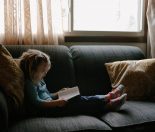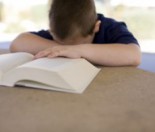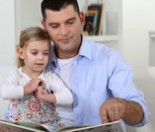Reading Recovery is a programme designed to help improve the reading ability of children who are struggling. Read more in Reading Recovery.
“Reading Recovery has one clear goal: to dramatically reduce the number of learners who have extreme difficulty with literacy learning and the cost of these learners to educational systems”
Marie Clay (1994)
What is Reading Recovery?
Reading Recovery is an early literacy intervention programme that provides children who are falling behind in reading and writing with a second chance. Trained Reading Recovery teachers give children one-to-one teaching in their first year of school, Year One (see Year Levels in Glossary). The rationale behind Reading Recovery occurring in Year One is to catch children early who are having literacy learning difficulties and consequently prevent problems from consolidating. Most New Zealand schools provide this second chance opportunity.
There are often long waiting lists for entry into Reading Recovery programmes. There are limited resources and it is up to each individual school whether or not they first of all offer the programme and secondly how many teachers are trained and run the programme.
How will the school know if my child needs Reading Recovery?
The reading and writing ability of all New Zealand school children is assessed close to their sixth birthday. This is sometimes referred to as Six-Year old testing. Most schools will give you the opportunity as parent/caregiver to meet with someone at the school to discuss the results of this assessment.
Based on the results of this assessment the school will refer children who have made the slowest reading and writing progress and who attain the lowest scores to Reading Recovery as soon as a space is available.
As a parent, if you have concerns about your child’s reading and writing progress prior to or after this testing you should speak with their teacher as soon as possible. You need to know whether they share the same concerns or whether it appears to be a problem that presents only at home.
Why does my child need Reading Recovery?
There are many reasons why a child may find reading and writing difficult at first. The children taken into Reading Recovery are those who have made least progress relative to their classmates. With one-to-one teaching children make faster progress because the teacher can design the lessons to suit that particular child’s strengths.
It is hugely important that any problems your child has with reading and writing are ironed out early on. Problems left will only compound and embed themselves in your child’s reading and writing processes. It is for this reason that Reading Recovery ‘kicks in’ so early in your child’s school career.
How does it work?
Reading Recovery is one-to-one intervention. This means that your child will be taken out of the classroom environment and will sit, just he or she with a teacher who will work solely with them to re-teach the reading and writing process.
Reading Recovery teachers give specific attention to letters, sounds, and words, both while writing text and as direct teaching within each lesson. The teacher will help the child learn to use connections between letters and sounds. Students will then use their knowledge of how words work in order to solve problems with difficult words while maintaining a good level of understanding of what they are reading.
The programme provides for a series of daily lessons which continue for a period of time anywhere from 12 – 20 weeks. The length of this period depends on the progress of the child.
When a child begins the programme his/her knowledge is tested and lessons are planned that suit their needs based on what he/she already knows. A child on the programme will spend 30 minutes a day with a Reading Recovery teacher in which time he or she will write a story and read many short books.
Most children catch up with their peers very quickly. A small number of children continue to have difficulty and are referred for further assessment and ongoing specialist help.
Reading Recovery happens in conjunction with reading and writing that occurs normally in class. Reading Recovery, in combination with strong classroom teaching, gives children the best chance for success.
Can I sit in on a Reading Recovery lesson?
You are encouraged to visit the school and see how your child and their teacher work together in a Reading Recovery lesson. If you are interested in doing this the teacher will usually ask that you wait a couple of weeks before visiting. This gives the two — the teacher and your child — a chance to get used to working with one another.
The teacher will be keen to discuss your child’s progress at any time during their series of lessons. Your interest and support will help your child make good progress in Reading Recovery.
What can I do to help my child?
There are some steps you can take to help your child improve his/her reading.
It is very important that there is continuity with their Reading Recovery lessons. Unless sick, ensure they are at school every day. Daily lessons are essential for children who have found literacy learning hard. In Reading Recovery each day’s lesson builds on the learning of the day before.
You can also offer support at home. After the first few lessons the teacher will begin to send home some easy books for independent reading. By taking an interest in and discussing what your child is reading you will provide valuable extra support. The teacher may also send home an envelope containing a cut-up version of the story your child has written that day. The idea behind this is for your child to put the story together again at home and read it to you.
If your child is entered into the Reading Recovery programme he or she will spend time with a Reading Recovery Teacher. This will be a teacher from the school who received additional training.
Reading Recovery Teachers are experienced junior class teachers. They have been given additional training that qualifies them to deliver intensive one-to-one instruction to six-year-old children having difficulty with literacy learning.
The successful implementation of Reading Recovery depends on the provision of high quality training for teachers. Schools select experienced junior class teachers who are fully committed to undertaking the year-long training course. Throughout that training year each teacher will work with at least four children individually for thirty minutes each child per day.
Once trained, Reading Recovery teachers attend support sessions as long as they are involved in Reading Recovery. These professional development sessions continue to be based on observation and discussion of Reading Recovery lessons.





